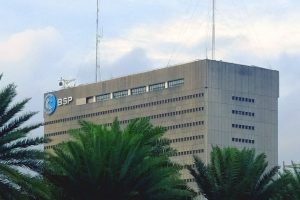External debt hits record $125.4 billion at end-2023

THE PHILIPPINES’ outstanding external debt hit a record-high $125.4 billion at the end of December, equivalent to 28.7% of gross domestic product (GDP), data from the Bangko Sentral ng Pilipinas (BSP) showed.
The central bank reported that external debt jumped by 12.7% from $111.3 billion at end-2022. It was also up by 5.5% from $118.8 billion as of end-September.
“The rise in the debt level was due to prior periods’ adjustments (i.e., borrowings made in previous quarters) amounting to $2 billion, of which $1.9 billion were borrowings by private sector nonbank firms,” the BSP said.
External debt includes all types of borrowings by residents from nonresidents.
The BSP said the increase in debt level is mainly attributed to net availments worth $4.9 billion by both the private and public sectors.
“The positive foreign exchange revaluation of borrowings denominated in other currencies as well as the net acquisition of Philippine debt securities by nonresidents from residents further increased the debt stock by $960 million and $816 million, respectively,” it said.
Last year, the peso appreciated by 18.5 centavos or 0.33% to P55.37 on Dec. 29 from its P55.755-per-dollar close on Dec. 29, 2022.
“The rise in the external debt stock was partially tempered by prior periods’ adjustments of $98 million,” it added.
The BSP said that the year-on-year rise in debt was due to “net availments of $9.2 billion, bulk of which were net borrowings by the National Government (NG).”
It also said this was due to the “change in the scope of the external debt to include nonresidents’ holdings of Philippine debt securities issued onshore reported in the first quarter of 2023 and prior years’ adjustments of $1.2 billion.”
This brought the external debt ratio, or the external debt as a percentage of GDP, to 28.7% in the fourth quarter. This was higher than 28.1% in the third quarter and the 27.5% ratio as of end-2022.
The debt service ratio, or principal and interest payments as a fraction of export receipts and primary income, jumped to 10.2% from 6.3% a year ago.
The BSP attributed this to higher principal and interest payments. From May 2022 to October 2023, the BSP raised borrowing costs by 450 basis points (bps) to bring the key rate to 6.5%, the highest in nearly 17 years.
“External debt service burden nearly doubled in US dollar terms in 2023 due to sharply higher US and global interest rates since 2022 to better manage both inflation and inflation expectations, amid higher world oil and other commodity prices triggered by the Russia-Ukraine war nearly two years ago,” Rizal Commercial Banking Corp. Chief Economist Michael L. Ricafort said in a Viber message.
The US Federal Open Market Committee (FOMC) has raised borrowing costs by 525 bps from March 2022 to July 2023, bringing the target Fed fund rate to 5.25-5.5%.
Meanwhile, BSP data showed that private sector debt rose by 5.4% to $47.6 billion at end-December from $45.1 billion in the previous quarter.
“Private sector borrowings for the quarter were mainly driven by the $3-billion availment by a nonbank firm under a syndicated loan from offshore banks. Proceeds from said borrowings were used to finance its capital expenditures and maturing obligations,” the BSP said.
It noted that the bulk of the recorded availments were from the increase in short-term liabilities of local banks and borrowings by private sector nonbank entities.
Meanwhile, public sector debt increased by 5.6% to $77.8 billion in the fourth quarter from $73.7 billion in the previous quarter.
The bulk or 91.2% of public sector obligations were from NG borrowings while the remainder came from government-owned and -controlled corporations, government financial institutions and the BSP.
“Public sector borrowers, on the other hand, tapped official creditors and the Islamic finance market through the maiden issuance of the NG’s $1-billion 5.5-year dollar-denominated Sukuk bond to fund general financing requirements, infrastructure projects, and social welfare programs.”
At end-December, the Philippines’ top creditor countries were Japan ($15.6 billion), China ($4.7 billion) and the United Kingdom ($4.2 billion).
Loans from multilateral ($33.1 billion) and bilateral sources ($15.2 billion) accounted for 38.5% of all external debt.
This was followed by bonds ($40.9 billion or 32.7%) and foreign banks and other financial institutions ($28.7 billion or 22.9%), while the rest ($7.5 billion or 6%) were owed to suppliers and foreign exporters.
“For the coming months, possible Fed rate cuts later in 2024 could help ease the country’s external debt service burden in terms of lower interest expenses on foreign debts going forward,” Mr. Ricafort said.
Markets are anticipating the Fed to begin cutting rates by the middle of the year, with the BSP expected to follow suit.
The FOMC is scheduled to have its meeting this week (March 19-20) while the Monetary Board is set to hold its next policy meeting on April 4. — Luisa Maria Jacinta C. Jocson




